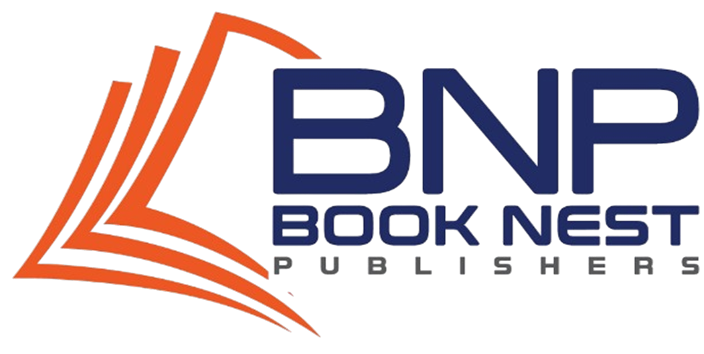Publishing a book is one of the most rewarding accomplishments for a writer. Whether it’s a novel, a children’s picture book, a devotional, or a business guide, seeing your work in print is a dream worth pursuing. In the past, authors relied solely on large book publishers to bring their work to readers. Today, with tools like Amazon Kindle Direct Publishing (KDP), Lulu, and other platforms, you can publish your book yourself and reach a global audience.
This guide will walk you step-by-step through the book publishing process—from book writing to book formatting, cover design, publishing options, and marketing.

Step 1: Start with Quality Book Writing
No publishing method can fix a weak manuscript. Your first step is to make sure your book writing is polished and ready for readers.
- Identify your audience – Are you writing for adults, children, or a specific niche such as faith-based readers?
- Plan your structure – Fiction needs strong characters and plot; nonfiction should have a clear, logical flow.
- Edit multiple times – Professional editing is worth the investment. Even experienced authors use editors to refine their work.
If your book is aimed at children’s book publishing companies, remember that text should be engaging but simple, and illustrations should complement the story. For Catholic book publishing, make sure your content is theologically accurate and resonates with your audience.
Step 2: Choose Your Publishing Route
You have several options when it comes to book publishing, each with its pros and cons.
Amazon Book Publishing
Amazon KDP is the most popular choice for authors looking to publish a book on Amazon. You can publish both Kindle eBooks and paperbacks with no upfront printing costs.
Benefits:
- Worldwide distribution through Amazon’s store
- Print-on-demand technology
- Quick publishing—books go live in 24–72 hours
Drawbacks:
- High competition
- Limited hardcover options unless you use other services like Lulu
Lulu Book Publishing
Lulu offers more flexibility in formats, including hardcovers and photo books. It also distributes to bookstores and libraries, making it a good choice for certain niches.
Specialized Book Publishers
- Children’s book publishing companies – Handle illustration, age-appropriate design, and targeted marketing.
- Catholic book publishing – Distribute to religious bookstores and faith communities.
Step 3: Master Book Formatting
A professionally written book still needs proper book formatting to meet industry standards.
For eBooks:
- Text should adapt to different screen sizes.
- Include a linked table of contents.
- Ensure proper chapter breaks.
For Print:
- Maintain consistent margins and font sizes.
- Add headers, footers, and page numbers.
- Use line spacing that enhances readability.
If you’re not familiar with tools like Kindle Create, InDesign, or Vellum, consider hiring professionals—many book publishers include formatting in their services.
Step 4: Create an Eye-Catching Cover
Your cover is the first thing potential readers see, and in online marketplaces like Amazon, it’s often the deciding factor in whether someone clicks to learn more.
- Match your genre – A thriller cover won’t look the same as a romance or a children’s book.
- Keep text clear – Your title and author name must be readable at thumbnail size.
- Use professional design – Poor-quality covers can harm sales.
Step 5: How to Publish a Book on Amazon
Publishing on Amazon KDP is straightforward:
- Create a KDP account at kdp.amazon.com
- Enter book details – Title, subtitle, author name, and book description
- Upload your manuscript – In correct book formatting for eBook or print
- Upload your cover – Meet Amazon’s technical specifications
- Set pricing and royalties – Choose between 35% and 70%
- Publish – Your book can go live in as little as 24 hours
Step 6: Promote Your Book
Successful book publishing is more than just uploading a file—it’s about connecting with your audience.
Marketing tips:
- Build an author website to showcase your books and collect email subscribers.
- Use social media to share updates and engage with readers.
- Run Amazon or Facebook ads to increase visibility.
- Offer free review copies to book bloggers and influencers in your genre.
For children’s books, consider school visits or library readings. For Catholic books, connect with churches, faith-based groups, and religious bookstores.
Step 7: Jobs in Book Publishing Houses
If the publishing process excites you beyond your own project, you might consider jobs in book publishing houses. Positions include editing, design, marketing, and distribution. This industry knowledge can also help you as an author, since you’ll understand how professional publishers operate.
Step 8: Keep Writing and Publishing
The more books you have, the easier it becomes to grow your audience. Many authors publish multiple titles each year, building momentum and credibility. Refining your book writing skills with each new project ensures that your work continues to improve.
Why Work with BookNest Publishers
While self-publishing offers full control, it can be overwhelming to handle everything alone. Working with a professional team like BookNest Publishers gives you access to experienced book publishers who can guide you through editing, book formatting, cover design, and marketing. You keep creative control while benefiting from industry expertise.

Final Thoughts
Learning how to self-publish a book is an exciting journey that combines creativity with entrepreneurship. From book writing and book formatting to choosing your publishing route and marketing your work, each step brings you closer to sharing your story with the world.With resources like Amazon KDP, Lulu, and specialized book publishers, you can publish almost any type of book—whether it’s a children’s story, a devotional, or a business guide—and reach readers across the globe. The key is to start with a great manuscript, prepare it professionally, and commit to promoting it effectively.


